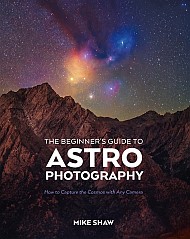Astronomy
Rare Triple Conjunction Smiles at Dawn on September 19th
Sometimes, it seems as if the Universe is literally smiling down upon us. If skies are clear this coming Friday September 19th, be sure to wake up early to catch a bizarre celestial scene as Venus, Regulus and the slim crescent Moon huddle together in the eastern dawn. This triple play is a complicated one, evolving one of the best conjunctions for 2025.
Clusters and Chains of Stars Reveal a Dynamic Milky Way
Gaia Proves Our Skies Are Filled with Chains of Starry Gatherings Gaia Proves Our Skies Are Filled with Chains of Starry Gatherings https://www.esa.int/Science_Exploration/Space_Science/Gaia/Gaia_proves_our_skies_are_filled_with_chains_of_starry_gatherings
First Dark Matter Sub-Halo Found In The Milky Way
There are plenty of theories about what dark matter is and how it might be gravitationally affecting the universe. However, proving those theories out is hard since it hardly ever interacts with anything, especially on “small” scales like galaxies. So when a research team claims to have found evidence for dark matter in our own galaxy, it's worth taking a look at how. A new paper from Dr. Surkanya Chakrabati and her lab at the University of Alabama at Huntsville (UAH) does just that. They found evidence for a dark matter “sub-halo” in the galactic neighborhood, by looking at signals from binary pulsars.
Aftershock of July’s 8.8 Earthquake Strikes Kamchatka. Tsunami Risk Waning
A powerful magnitude 7.8 aftershock off Russia’s Kamchatka Peninsula that arose from July’s magnitude 8.8 earthquake is raising concerns about possible tsunami impacts, although risk appears to be waning
Starting HRT in early menopause may reduce women's risk of Alzheimer's
Starting HRT in early menopause may reduce women's risk of Alzheimer's
New AI Tool Predicts Which of 1,000 Diseases Someone May Develop in 20 Years
A large language model called Delphi-2M analyzes a person’s medical records and lifestyle to provide risk estimates for more than 1,000 diseases
Genetics Can Track How Languages Mixed in the Past
New research shows that wherever human populations mix, their languages blend as well
Early Galaxy Hosts Black Hole with the Mass of 50 Million Suns
Astronomers using the James Webb Space Telescope have confirmed that, just 800 million years after the Big Bang, there is a galaxy that contains a supermassive black hole — and not much else.
The post Early Galaxy Hosts Black Hole with the Mass of 50 Million Suns appeared first on Sky & Telescope.
Milky Way Views
Stunning amber deposits hold insects from the time of the dinosaurs
Stunning amber deposits hold insects from the time of the dinosaurs
Some viruses like to cheat – and that may be good for our health
Some viruses like to cheat – and that may be good for our health
Dogs with Large Vocabularies Can Understand Category Words, Not Just Names
These dogs can extend words to new objects based on function the way children do in early language learning
New Bright Comet SWAN Could Perform a Surprise October Show
A new comet approaching from sunward could make a fine dusk appearance in October. There was chatter on the boards this past Friday September 12th, about a comet seen in the Solar Wind Anisotropies (SWAN) images near the Sun. Tentatively named SWAN25B and now formally designated as C/2025 R2 SWAN, this comet could put on a brief show in late September into October if it holds up.
Astronomers Catch a Planet in the Act of Being Born
It’s rather strange to think about catching a planet in the act of being born given that the process takes millions of years but for the first time, astronomers have done just that! The evidence reveals a planet actively forming and feeding from its surrounding disk of gas and dust. The discovery of hydrogen emission from the protoplanet offers a new glimpse into the violent stages of planetary formation, revealing processes that shaped our own Solar System billions of years ago.
Interstellar Objects Like Comet 3I/ATLAS Could Act As Planetary Seeds
ISOs like Comet 3I/ATLAS are fascinating yet fleeting visitors from distant solar systems. New research suggests that when captured by a young solar system that's still forming planets, these objects could act as planetary seeds for the formation of planets.
Civilization Can't Arise Without Plate Tectonics And Carbon Dioxide
Can a planet that lacks plate tectonics and has very little carbon dioxide support life? Maybe. Can it support life long enough for a technological civilization to arise? New research says no.


